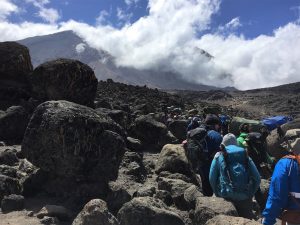The Challenge of Summiting Kilimanjaro
Mount Kilimanjaro, located in Tanzania, is the highest freestanding mountain in the world and one of the most sought-after destinations for adventure seekers and avid hikers. Standing at 19,341 feet above sea level, summiting Kilimanjaro is no easy feat and requires careful planning, physical fitness, and mental preparation. While the allure of reaching the peak may be tempting, it is essential to consider the challenges that come with attempting this climb.
The climb to the summit of Kilimanjaro is a physically demanding endeavor that requires participants to navigate through various terrains, ranging from lush rainforests to arid alpine deserts. The altitude also poses a significant challenge, as climbers may experience symptoms of altitude sickness, including headaches, nausea, and fatigue. Proper acclimatization is crucial to reducing the risk of altitude-related illnesses and ensuring a successful summit.
In addition to the physical challenges, climbers must also contend with unpredictable weather conditions on Kilimanjaro. Temperatures can vary drastically, from scorching heat during the day to freezing cold at night. Strong winds and sudden rain showers are common occurrences, adding to the difficulty of the climb. Proper gear and clothing are essential to staying safe and comfortable throughout the journey.
Factors to Consider Before Attempting the Climb
Before embarking on the journey to summit Kilimanjaro, there are several factors that climbers must consider to ensure a safe and successful climb:
-
Physical Fitness: Climbing Kilimanjaro requires a good level of physical fitness and stamina. Participants should engage in regular exercise and endurance training to prepare for the demands of the climb.
-
Acclimatization: Proper acclimatization is essential to adjusting to the high altitude and reducing the risk of altitude sickness. It is recommended to choose a route that allows for gradual ascent and includes rest days for acclimatization.
-
Gear and Equipment: Climbers must have the appropriate gear and equipment for the climb, including sturdy hiking boots, warm clothing, a sleeping bag, and a backpack. It is also important to pack plenty of water, snacks, and sunscreen.
-
Experience: While no prior climbing experience is required to summit Kilimanjaro, participants should have a basic level of fitness and hiking experience. It is also recommended to undergo a medical check-up before attempting the climb.
-
Guided Tours: To maximize safety and success, it is advisable to join a guided tour organized by experienced and reputable operators such as Sunset Africa Safari. Their knowledgeable guides and support staff can provide assistance and guidance throughout the climb, ensuring a memorable and rewarding experience.
In conclusion, while summiting Kilimanjaro is a challenging endeavor, with proper preparation and guidance, anyone with a sense of adventure and determination can achieve this remarkable feat. For booking inquiries and more information about guided tours to Kilimanjaro, please contact Sunset Africa Safari at info@sunsetafricasafari.com.



